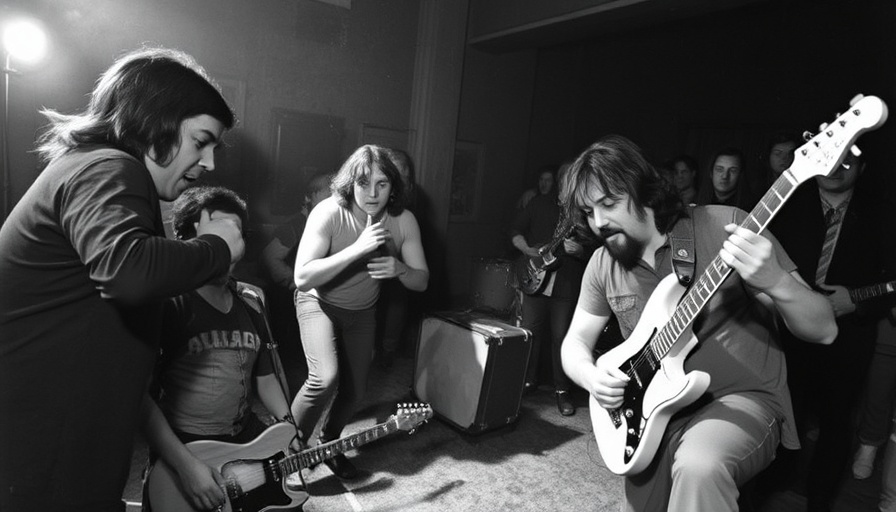
Behind the Scenes of 'Dig!': A Turbulent Journey
The documentary 'Dig!', directed by Ondi Timoner, chronicles the tumultuous lives of two rock bands, the Brian Jonestown Massacre and the Dandy Warhols. Launched from a desire to shine a light on bands on the cusp of fame, this film unexpectedly transformed into an intimate portrayal of friendship, rivalry, and the darker sides of the music industry. Shot over a staggering seven-year span, the film reveals the chaotic and often obsessive nature of pursuing musical dreams.
Art vs. Commerce: The Struggle of Two Bands
'Dig!' profoundly contrasts artistic integrity with commercial success. Timoner's unique filming style—using Super 8 for the Brian Jonestown Massacre and 16mm and 35mm film for the Dandy Warhols—visually delineates the divergent trajectories of these bands. While the Dandy Warhols represent the polished, commercially viable side of music, the Brian Jonestown Massacre embodies a reckless passion for artistic expression, often leading to self-destruction.
Key Moments Captured: Intimacy and Chaos
The documentary is distinguished by its ability to capture raw moments that highlight both triumphs and setbacks. Ondi Timoner filmed an astonishing 2,500 hours of footage, allowing the volatile relationships within and among the bands to unfold candidly. Through her lens, audiences witness everything from backstage discussions to chaotic on-stage confrontations, drawing viewers into the heart of the rock scene of the 1990s.
The Making of a Documentary: A Filmmaker's Perspective
In reflecting on her experience, Timoner emphasizes how the extensive timeframe allowed for a deeper understanding of the bands’ journeys. The feeling of being entrenched in the musicians’ lives transformed the camera into an invisible participant in their stories—capturing both the magic of their moments and the turmoil that follows. Timoner's approach blurs the lines between the filmmaker and the subject, creating an authenticity seldom seen in music documentaries.
Friendship, Rivalry, and Reconciliation
The evolving relationship between Anton Newcombe of the Brian Jonestown Massacre and Courtney Taylor-Taylor of the Dandy Warhols stands as the emotional core of 'Dig!'. Their contrasting temperaments—Newcombe’s chaotic brilliance versus Taylor-Taylor's composed ambition—drive the narrative. The recent follow-up release, 'Dig! XX', chronicles how these individuals made peace after years of animosity, surprising fans who remember the fierce rivalry depicted in the original film.
Impact on Documentaries and Indie Music
Upon winning the Sundance Grand Jury Prize in 2004, 'Dig!' redefined the standards for music documentaries. It changed the way filmmakers approach storytelling in the music world, emphasizing an immersive, longitudinal lens that captures the ups and downs of artistic life. The film not only rejuvenated interest in the Dandy Warhols and Brian Jonestown Massacre but also sparked important conversations about mental health and the toll of fame within the industry.
Final Thoughts on the 'Dig!' Legacy
Ultimately, 'Dig!' serves as a compelling narrative that blends chaos with creativity, pointing out the costs associated with artistic ambition. It’s an enlightening film that offers insights for aspiring musicians and documentary filmmakers alike. Understanding the historical and cultural context around 'Dig!' not only helps illuminate its significance but also fosters a greater appreciation for the complexities of the music industry.
For those curious about the intersections of art and commerce in the music world, 'Dig!' remains an essential viewing experience, showcasing the powerful stories that emerge from the creative struggle.
If you're intrigued by this narrative of artistic ambition and desire, explore more music documentaries that highlight similar journeys—perhaps gaining inspiration for your own ventures or creative pursuits.
 Add Row
Add Row  Add
Add 




Write A Comment